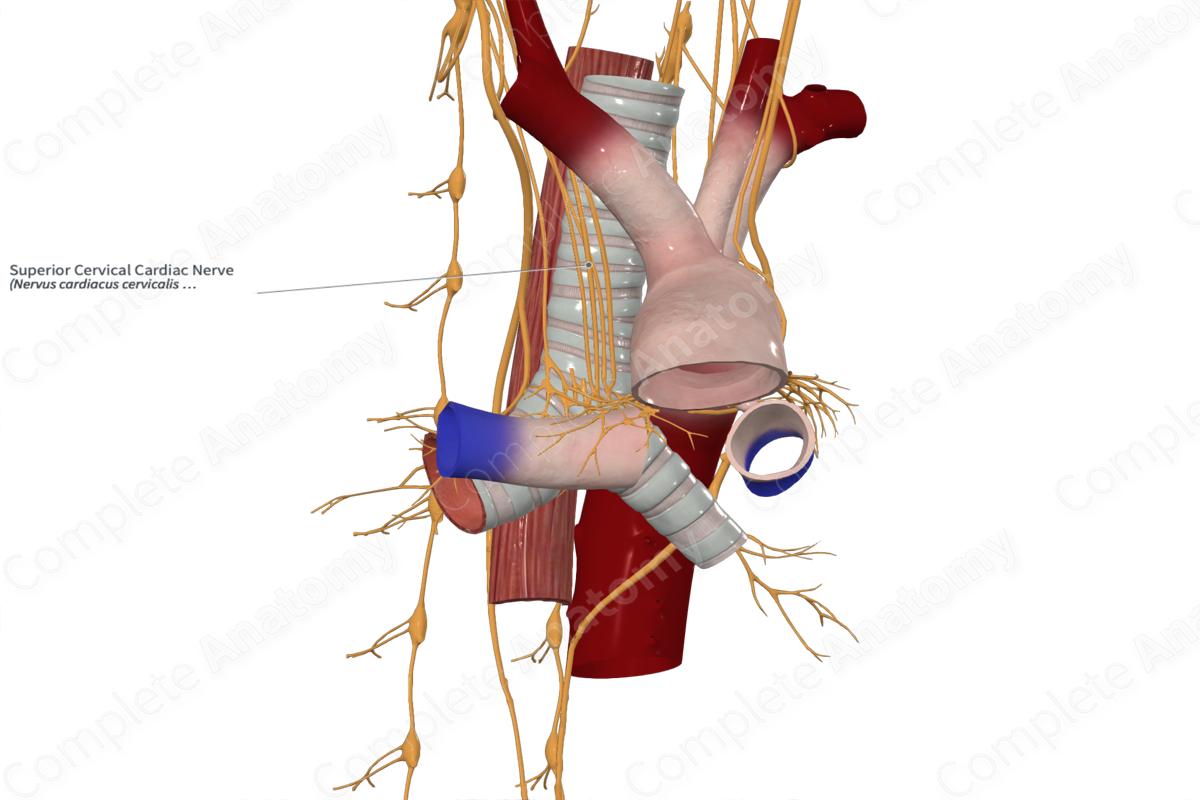
Quick Facts
Origin: Superior cervical ganglion.
Course: Inferiorly from the superior cervical ganglion, following the course of the common carotid artery. Extends as far as the deep cardiac plexus (right) or over the anterior surface of aortic arch to the superficial cardiac plexus (left).
Branches: Right: deep cardiac plexus; Left: deep cardiac plexus.
Supply: Sympathetic efferent fibers: increases heart rate, cardiac impulse conduction, and force of myocardial contraction, dilates coronary arteries.
Related parts of the anatomy
Origin
The superior cervical cardiac nerve originates as several branches that emerge from the superior cervical ganglion, the uppermost ganglion of the sympathetic trunk. Occasionally, branches of the superior cervical cardiac nerve emerge from the sympathetic trunk directly inferior to the superior cervical ganglion.
Course
The superior cervical cardiac nerve runs from the superior cervical ganglion down along the common carotid artery to the cardiac plexus. The right superior cervical cardiac nerve follows the brachiocephalic artery to the posterior aspect of the aortic arch, ending at the deep cardiac plexus. The left superior cervical cardiac nerve runs down along the common carotid artery, over the left anterior surface of aortic arch and into the superficial cardiac plexus. Some fibers continue posteriorly to the deep cardiac plexus (Netter, 2011, De Gama et al., 2012).
Branches
The right and left superior cervical cardiac nerves send their fibers to the deep and superficial cardiac plexus, respectively.
Supplied Structures & Function
The superior cervical cardiac nerve carries both sympathetic efferent fibers and visceral afferent fibers.
Sympathetic efferent fibers supply the heart, and when stimulated, increase heart rate, cardiac impulse conduction, and the force of myocardial contraction, as well as dilate coronary arteries. Visceral afferent fibers from the heart, when stimulated, convey pain sensations via the superior cervical cardiac nerve towards the thoracic spinal cord.
List of Clinical Correlates
—Tachycardia
—Referred pain
References
De Gama, B. Z., Lazarus, L., Partab, P. and Satyapal, K. S. (2012) 'The Sympathetic and Parasympathetic Contributions to the Cardiac Plexus: a Fetal Study', International Journal of Morphology, 30, pp. 1569-1576.
Netter, F. H. (2011) Atlas of Human Anatomy. Netter Basic Science Series: Saunders/Elsevier.



